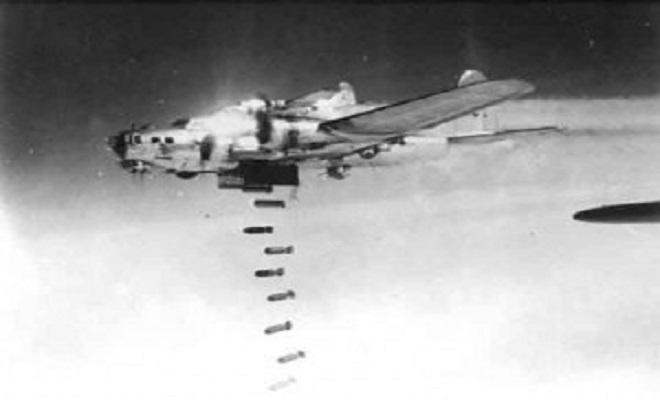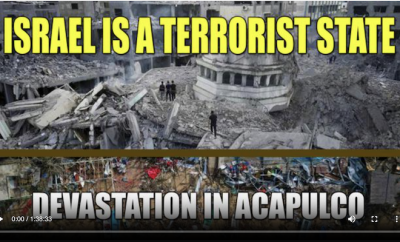 NEO.org
NEO.org
Featured
Transformation of Historical Memory in the United States and Japan
by , NEO.org:
The upcoming anniversary celebrations of the 70th anniversary of World War II inevitably actualize the problems of assessing the nature of participation of not only losers, but winners as well. The latter have their own skeletons that cannot indefinitely be kept in the closet. In this regard, the transformation of the historical memory of the main opponents in the war in the Pacific, that is, the United States and Japan, is of interest.
In the official rhetoric concerning certain aspects of the relationship between them, formed in the postwar years, both sides sought to avoid the possibility of themes of the Pacific War at all.
In particular, its “episodes”, such as the massive bombing of Tokyo using incendiary bombs, conducted in March 1945 by 334 strategic B-29 bombers and the atomic bombings of Hiroshima and Nagasaki on August 6 and 9 of the same year. With approximately equal consequences for the civilian population.
However, neither in the United States nor in Japan are there any restrictions on the academic study of various aspects of the pre-war, wartime, and postwar periods. Especially statutory ones. But they in no way affect the current policies of the both countries.
Such a “rationalist” approach of the United States and Japan to the painful period of bilateral relations is quite justified not only politically, but also from a moral point of view.
After the completion of the bloodiest massacre in human history, a brand new political map with a new dividing line began to appear in the world. The two former mortal enemies were suddenly on the same side, and the “past” should not interfere with the “present”.
The actual content of the “Treaty of Mutual Cooperation and Security between the United States and Japan” concluded at the beginning of 1960 can be reduced to a short thesis: you (Americans) provide us security guarantees, and we (Japanese) provide our territory for the forward deployment of your armed forces.
Each party has extracted its own benefits from the Treaty of 1960: the US was able to implement a policy of military containment of the USSR and China in the Western Pacific, and Japan could focus on the priority issue of the accelerated economic development of the country.
For the latter, both of these elements of the state post-war path resulted from the implementation of the so-called “Yoshida Doctrine” (Shigeru Yoshida was the first post-war Prime Minister of Japan), which ensured the rapid economic progress of the country and its return (along with Germany) to the forefront of contemporary world politics.
As for the vague category called “morality”, it is well known that the historical process is irreversible, those who died in past wars could not be raised up, life goes on, and the dead should not lie in the way of the living. Attempts to “learn lessons” from another tragedy in human history should be taken care of by professionals.
However, the “silence” of the official policy regarding unpleasant episodes of the war period could not continue indefinitely. It was broken in 2007 by Japanese Minister of Defense Fumio Kyuma, the first who took office after the transformation of the government agency in charge of the defense of the country into a full-fledged ministry.
He positively assessed the impact of the US atomic bombing on the process to end the war in the Pacific and the format of the Japanese post-war state.
This implied the potential “excessive” activity of the USSR on the implementation of the Yalta commitments to allies in the event of a dragging of hostilities in the Pacific. The consequence of this could be the development in the territory of post-war Japan of situation similar to the territorial division of post-war Germany.
This statement of F. Kyuma caused the fully expected sharply negative reaction of the Japanese public and political opposition of the then (and now) ruling Liberal Democratic Party. After a few months F. Kyuma tendered his resignation that “with regret” was accepted by then (and current) Prime Minister Shinzo Abe.
However, the above remark could not surprise fans pinning high hopes in the field of “alternative history” that has a right to exist as a tool for attempts to extract useful lessons from the historical process.
The notion that the atomic bombing of Hiroshima and Nagasaki had contributed to (according to one view, were the main reason for) the end of the slaughter in the Pacific, the continuation of which would only have as a consequence the senseless destruction of more millions of people, has the right to peaceful discussion.
To what degree can you remain calm when discussing one of the manifestations of human madness called “war”, which is known to be easy to start but hard to finish?
Secondly, in the semantic content F. Kyuma fully replicated America’s original interpretation of the “usefulness” of the atomic bombings of Hiroshima and Nagasaki. This is a very important and relevant motive for modern Japan that sees no alternative to the military-political alliance with the United States in the face of the “China threat”.
However, it must be recalled that the original American interpretation lacked such an element of “usefulness” as the preservation of the lives of millions of Japanese who would become inevitable victims of a continuing war on the main Japanese islands. The degree of mutual exasperation at the final stage of the war can be judged by the results of battles over the islands of Iwo Jima and Okinawa.
However, as noted above, until recently, the United States generally avoided addressing at the official level the subject of motives and consequences of the atomic bombings. The long official neglect by the US of August 6 (the day of the bombing of Hiroshima), which has a very important symbolic meaning for the Japanese, was the result of this “ostrich” position.
It was in only 2010 that the US ambassador to Japan was present for the first time in the Hiroshima memorial ceremony (which became a tradition for the Japanese), which was an important step of Washington toward the Japanese public sentiment of Hiroshima and Nagasaki.
In December 2013, the mayors of Hiroshima and Nagasaki appealed to President Barack Obama with an invitation to visit. The letter addressed to him said that the Japanese, who “do not ask for an apology from the US, will be sincerely happy” just to see him in these cities.
These messages have not had any result yet. Apparently calls “to be bold” in the evaluation of “unpleasant” episodes of the recent past, which are distributed in the direction of the current leadership of Japan, can be also applied to the leader of its former enemy in the war in the Pacific.
The first and last time Obama stated (in a rather indefinite form) his intention to visit Hiroshima in January 2010, when the intensity of his rhetoric on nuclear disarmament had already begun to subside. However, in this anniversary year, he still has a few months left for a positive response to the said letter.
It seems that such a gesture on the part of the American president may acquire a certain likelihood, if in the upcoming ceremonies marking the end of the Pacific War Shinzō Abe takes into account the wishes of his key ally regarding the evaluation of the role of their country in this tragic period in the history of mankind.
In the meantime, the both sides continue to pursue symbolic actions to further “demine” their complex joint historical heritage.
Such was, for example, participation in this March by the officials of US and Japan, as well as representatives of the armed forces of the both countries in the process of the annual commemoration of all victims in the battle for Iwo Jima Island – one of the bloodiest episodes of the Pacific War.
Seventy years ago in the “Banzai charge” the entire Japanese garrison of Iwo Jima was killed, which included 22 thousand soldiers and officers, as well as 7 thousand Americans (15 thousand Americans military men were wounded). In 1968, Iwo Jima Island (currently called Ioto) was returned to the possession of Japan.
Such events are not able to “rewrite” the history, but they contribute to healing the wounds inflicted by it.
First appeared:http://journal-neo.org/2015/04/07/rus-transformatsiya-istoricheskoj-pamyati-v-ssha-i-yaponii/












